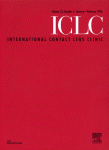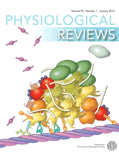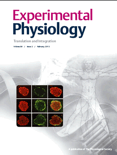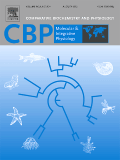
Physiological Reports
Scope & Guideline
Advancing the Frontiers of Physiology
Introduction
Aims and Scopes
- Cardiovascular Physiology:
Research in this area covers studies on heart function, vascular dynamics, and the effects of various interventions (e.g., exercise, pharmacological agents) on cardiovascular health. - Metabolic Physiology:
This scope includes investigations into energy metabolism, insulin sensitivity, and the effects of diet and exercise on metabolic processes in different populations. - Respiratory Physiology:
Papers often focus on lung function, the effects of environmental factors on respiratory health, and mechanisms of respiratory diseases, including COVID-19-related studies. - Exercise Physiology:
This area explores the physiological adaptations to different forms of exercise, including resistance training, aerobic exercise, and high-intensity interval training. - Neurophysiology:
Research in neurophysiology addresses the interactions between neural function and physiological responses, including studies on pain perception, autonomic function, and cognitive effects related to physical activity. - Renal Physiology:
Studies focus on kidney function, the impact of various treatments on renal health, and the relationship between kidney function and systemic physiology. - Cellular and Molecular Physiology:
This includes research on the cellular mechanisms underlying physiological responses, such as cellular signaling pathways, gene expression, and mitochondrial function. - Comparative Physiology:
Research that compares physiological processes across different species or conditions to understand evolutionary adaptations and mechanisms.
Trending and Emerging
- Long COVID and Post-Acute Sequelae:
An increase in studies focusing on the physiological impacts of COVID-19, particularly long-term effects and post-acute sequelae, highlights the urgency and relevance of understanding this emerging health issue. - Gut Microbiome and Metabolism:
Research exploring the connections between the gut microbiome, metabolic health, and exercise has gained traction, reflecting a growing recognition of the microbiome's role in overall health. - Sex Differences in Physiology:
There is a rising interest in understanding how sex influences physiological responses, including differences in disease susceptibility and treatment responses. - Environmental Physiology:
Research focusing on the physiological adaptations to environmental stressors, such as altitude, heat, and pollution, has increased, especially in the context of climate change and its health implications. - Biomarkers for Disease Prediction:
Emerging studies are increasingly utilizing biomarkers to predict disease risk and assess physiological responses in various populations, reflecting a trend towards personalized medicine. - Innovative Therapeutic Approaches:
Research on novel therapeutic strategies, including gene therapy, stem cell therapy, and new pharmacological agents, is becoming more prominent as the field seeks to address complex health issues. - Exercise and Mental Health:
There is a growing body of literature investigating the effects of physical activity on mental health outcomes, emphasizing the importance of exercise in psychological well-being.
Declining or Waning
- Traditional Pharmacology Studies:
Research centered on the pharmacological impacts of traditional drugs on physiological systems appears to be decreasing, possibly due to a shift towards more innovative therapeutic approaches and a focus on personalized medicine. - Basic Physiology without Clinical Relevance:
There seems to be a decline in studies focused solely on basic physiological mechanisms without direct clinical applications, as the journal increasingly prioritizes research with translational relevance. - Animal Models of Disease:
While animal research remains crucial, there is a trend towards fewer studies focusing on basic animal models of disease, as researchers emphasize the need for human-relevant findings and clinical applications. - Single-Factor Studies:
Research examining the effects of single variables in isolation (e.g., one drug, one type of exercise) is declining as the field moves towards more integrative approaches that consider multiple interacting factors.
Similar Journals

AMERICAN JOURNAL OF PHYSIOLOGY-ENDOCRINOLOGY AND METABOLISM
Transforming understanding in endocrinology and metabolism.American Journal of Physiology-Endocrinology and Metabolism, published by the American Physiological Society, stands as a leading platform for disseminating high-quality research in the fields of endocrinology, diabetes, and metabolism, as well as general physiology. With an impressive impact factor placing it within the Q1 category across multiple relevant disciplines (Endocrinology, Diabetes and Metabolism; Physiology; and Medical Physiology), this journal reflects its authoritative position in the scientific community. Spanning from 1980 to 2024, the journal consistently publishes groundbreaking studies and significant findings that advance our understanding of hormonal regulation and metabolic processes. Although it does not currently offer open access, it provides valuable resources for researchers, professionals, and students alike, eager to stay at the forefront of advancements in physiological sciences. Addressed in Rockville, Maryland, its commitment to excellence and rigorous peer review ensures that every article contributes essential insights to the field.

FISH PHYSIOLOGY AND BIOCHEMISTRY
Advancing Understanding of Fish PhysiologyFISH PHYSIOLOGY AND BIOCHEMISTRY, published by Springer, is a leading journal in the fields of aquatic science, biochemistry, and physiology, with an impressive trajectory since its inception in 1986 and continuing through 2024. Operating from the Netherlands, this journal serves as a vital platform for researchers, professionals, and students alike, showcasing innovative studies that explore the physiological and biochemical aspects of fish, contributing significantly to our understanding of aquatic ecosystems and their inhabitants. With a robust impact factor reflected in its Q1 status in Aquatic Science and notable rankings in other relevant categories, FISH PHYSIOLOGY AND BIOCHEMISTRY maintains a strong scholarly influence, evidenced by its Scopus ranking within the top quartiles of various biological sciences disciplines. While the journal does not currently offer open access options, it remains a cornerstone for advancing knowledge and fostering collaboration within the community dedicated to aquatic biology and related fields.

RESPIRATORY PHYSIOLOGY & NEUROBIOLOGY
Bridging Respiratory Medicine and Neurobiological UnderstandingRESPIRATORY PHYSIOLOGY & NEUROBIOLOGY, published by Elsevier, is a prominent journal in the fields of respiratory medicine, neurobiology, and physiology. With an ISSN of 1569-9048 and E-ISSN 1878-1519, this journal serves as an essential platform for disseminating high-quality original research and reviews that explore the intricate relationships between respiratory function and neural controls. Located in the Netherlands, it boasts an impressive standing within its field, categorically placed in the Q3 quartile for Neuroscience and Physiology and Q2 for Pulmonary and Respiratory Medicine according to the 2023 metrics. With a Scopus rank of #58 in Pulmonary and Respiratory Medicine and a robust impact factor indicative of its academic influence, the journal aims to foster advancement in understanding the physiological and neurobiological aspects of respiration. Although the journal is not open access, its content is vital for researchers, professionals, and students eager to contribute to the expanding knowledge base in these critical scientific domains.

JOURNAL OF PHYSIOLOGY AND BIOCHEMISTRY
Catalyzing Knowledge Exchange in Biomedical SciencesJOURNAL OF PHYSIOLOGY AND BIOCHEMISTRY, published by Springer in the Netherlands, serves as a pivotal platform for disseminating high-quality research within the fields of physiology, biochemistry, and related biomedical sciences. With an impressive impact factor reflected in its categorization as Q2 in Biochemistry and Q1 in Medicine (miscellaneous), this journal fosters a vibrant community of scholars dedicated to advancing knowledge and innovation. The journal’s broad scope encompasses a wide range of topics from cellular mechanisms to systemic physiology, making it relevant for both theoretical and applied sciences. Researchers and practitioners are encouraged to utilize the available Open Access options to reach a wider audience. The journal’s continuous contribution to the scientific dialogue since its inception in 1996 positions it as a key resource for professionals and students alike, facilitating the exploration of cutting-edge topics and collaborative research opportunities.

Physiology International
Empowering Knowledge in Physiology and WellnessPhysiology International is a distinguished journal dedicated to the exploration and advancement of knowledge in the fields of physiology, sports medicine, and rehabilitation. Published by AKADEMIAI KIADO ZRT in Hungary, this open-access journal has been a reliable source of scholarly articles since its inception in 2016, providing valuable insights into both complementary and alternative medicine, as well as traditional medical practices. With an impact factor that situates it in Q2 and Q3 quartiles across related disciplines, including Physical Therapy, Sports Therapy and Rehabilitation and Orthopedics and Sports Medicine, it represents a vital resource for professionals and researchers looking to stay abreast of the latest findings and methodologies. The journal is indexed on Scopus, signifying its credibility and relevance in the medical community. As it continues to develop through 2024, Physiology International invites contributions that challenge existing paradigms and foster innovative approaches to health and wellness, making it an essential platform for advancing the conversation in medical physiology and its applications.

Physiological Reviews
Illuminating the Complexities of Life Through PhysiologyPhysiological Reviews is a prestigious journal published by the American Physiological Society, dedicated to advancing our understanding of physiology across various domains. With an impressive impact factor that places it in Q1 quartiles for medicine, molecular biology, and physiology as of 2023, this journal is recognized as a leading source of high-quality reviews and research analyses. The journal has been a vital resource for the scientific community since its inception in 1945, providing in-depth and comprehensive insights that are crucial for both scholars and practitioners in the field. Although not an open-access publication, it remains widely accessible through institutional subscriptions, ensuring that crucial research findings are disseminated efficiently. With Scopus rankings that place it in the top percentile across multiple categories, Physiological Reviews continues to be an essential platform for the latest advancements and discoveries in physiology, making it indispensable for researchers, professionals, and students alike.

EXPERIMENTAL PHYSIOLOGY
Pioneering discoveries in the realms of Nutrition and Physiology.EXPERIMENTAL PHYSIOLOGY, published by WILEY, stands as a vital resource in the fields of Nutrition and Dietetics and Physiology, providing high-quality, peer-reviewed research since its inception in 1990. With an impressive categorization into the Q2 quartile in these domains, the journal emphasizes the integration of experimental and clinical findings, making significant contributions to our understanding of physiological processes and nutritional impacts on health. The journal operates within a competitive landscape, ranked significantly in Scopus, showcasing its relevance to both the medical community and nutritional sciences, as evidenced by its rankings in Nursing, Medicine, and Biochemistry. Though it is not currently open access, the journal remains an indispensable tool for researchers, professionals, and students seeking to deepen their knowledge and stay updated on cutting-edge research. With a publication window extending to 2024, EXPERIMENTAL PHYSIOLOGY continues to influence the academic discourse and promote advancements in its respective fields.

COMPARATIVE BIOCHEMISTRY AND PHYSIOLOGY A-MOLECULAR & INTEGRATIVE PHYSIOLOGY
Exploring Cutting-edge Research in Comparative Physiology.Comparative Biochemistry and Physiology A-Molecular & Integrative Physiology, published by Elsevier Science Inc, serves as a pivotal platform for cutting-edge research in the fields of biochemistry, physiology, and animal sciences. The journal, holding an esteemed presence with an ISSN of 1095-6433 and E-ISSN 1531-4332, spans a remarkable history of contributions since its inception in 1960, showcasing significant findings up to 2024. As a Q1 quartile journal in Animal Science and Zoology and featuring competitive rankings across various biochemistry and physiology disciplines, it stands out as a leading resource for both established researchers and emerging scholars alike. The journal is committed to publishing high-quality, peer-reviewed articles that deepen our understanding of molecular and integrative physiology, playing an essential role in advancing scientific knowledge and fostering interdisciplinary collaboration. With access options that prioritize the dissemination of impactful research, Comparative Biochemistry and Physiology continues to shape the dialogue within these dynamic fields.

Frontiers in Physiology
Pioneering research at the intersection of physiology and medicine.Frontiers in Physiology, published by FRONTIERS MEDIA SA, is a leading open-access journal that has been at the forefront of physiological research since its inception in 2010. As a reputable publication based in Switzerland, it aims to foster the dissemination of groundbreaking findings across various domains of physiology, engaging a global audience of scholars and practitioners. With a commendable Q2 ranking in the fields of both general physiology and medical physiology for 2023, this journal stands out in its field, achieving a significant Scopus rank of #32/113 in medical physiology and #58/193 in biochemistry, genetics, and molecular biology. Frontiers in Physiology not only commits to maintaining high scholarly standards but also ensures that all its articles are freely accessible, thereby promoting collaborative knowledge exchange. With a clear focus on advancing our understanding of physiological processes, the journal plays a crucial role in the development of innovative approaches to health and disease, making it an essential resource for researchers, professionals, and students alike.

JOURNAL OF MUSCLE RESEARCH AND CELL MOTILITY
Connecting Researchers to the Heart of Muscle and Cell StudiesJOURNAL OF MUSCLE RESEARCH AND CELL MOTILITY, published by Springer, is a premier journal dedicated to advancing our understanding of muscle biology and cellular motility. With an ISSN of 0142-4319 and an E-ISSN of 1573-2657, this journal stands out in the fields of biochemistry, cell biology, and physiology, proudly holding a Q2 ranking in each of these categories as per 2023 metrics. Covering significant developments from its inception in 1963 to its anticipated contributions through 2024, this journal serves as a vital platform for researchers and professionals to disseminate their findings and insights globally. Although it does not currently offer open access, its robust academic rigor and relevance are evident from its Scopus rankings, making it a crucial resource for those invested in the biological sciences. With a focus on original research articles, reviews, and methodological advancements, the journal fosters innovative collaborations and discussions within the scientific community, making it an invaluable addition to any researcher’s library.